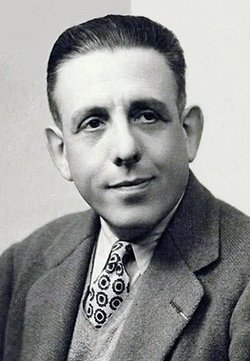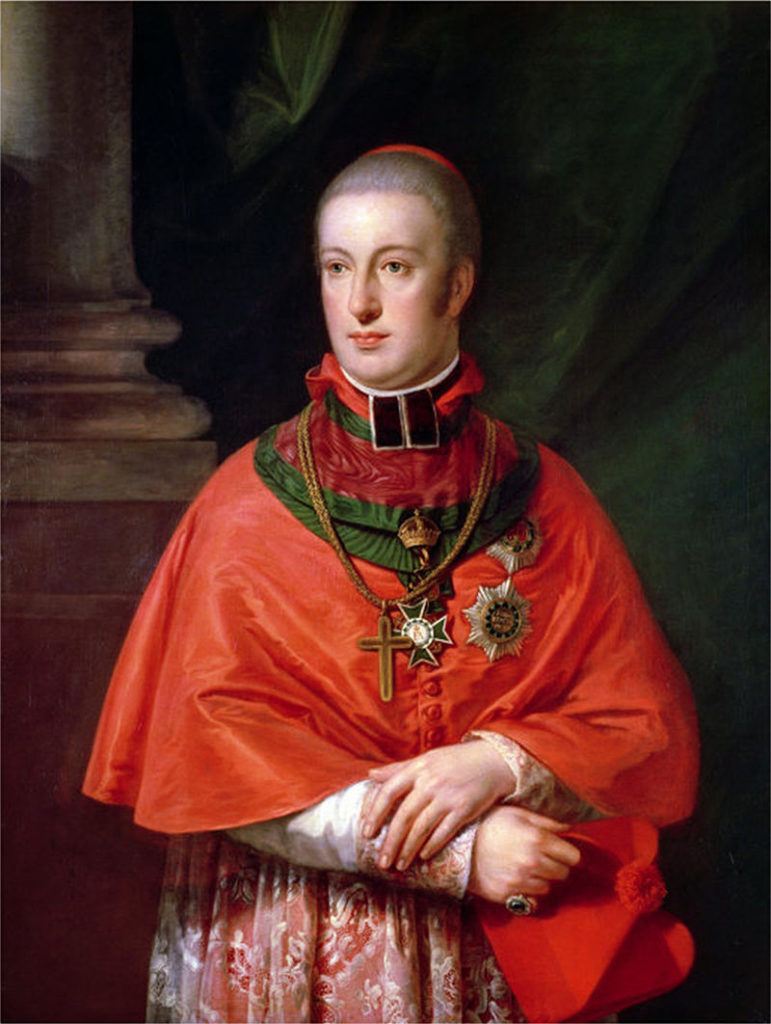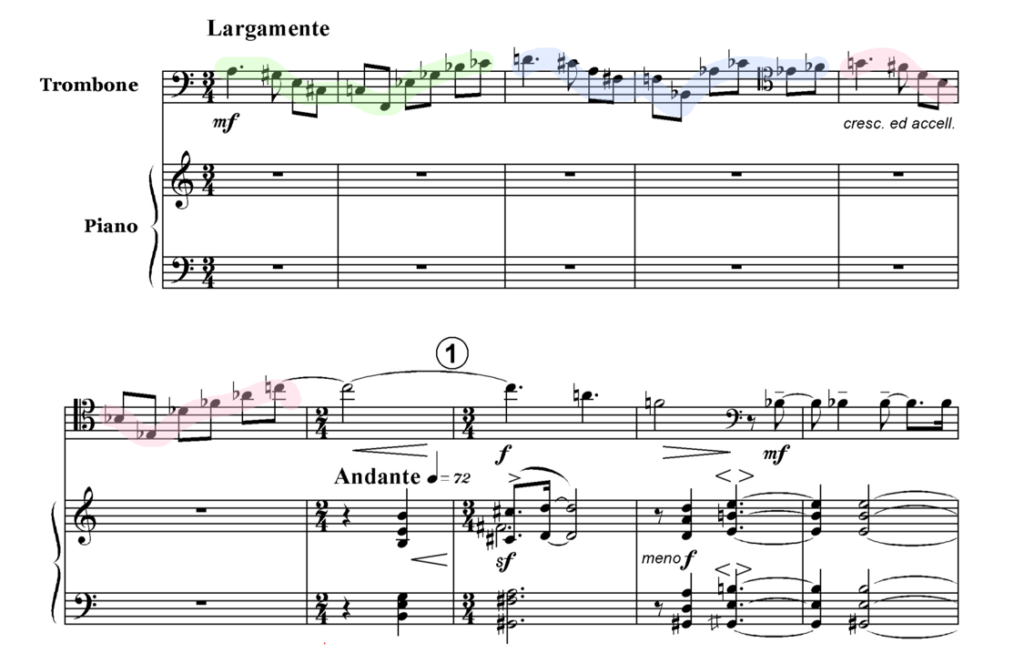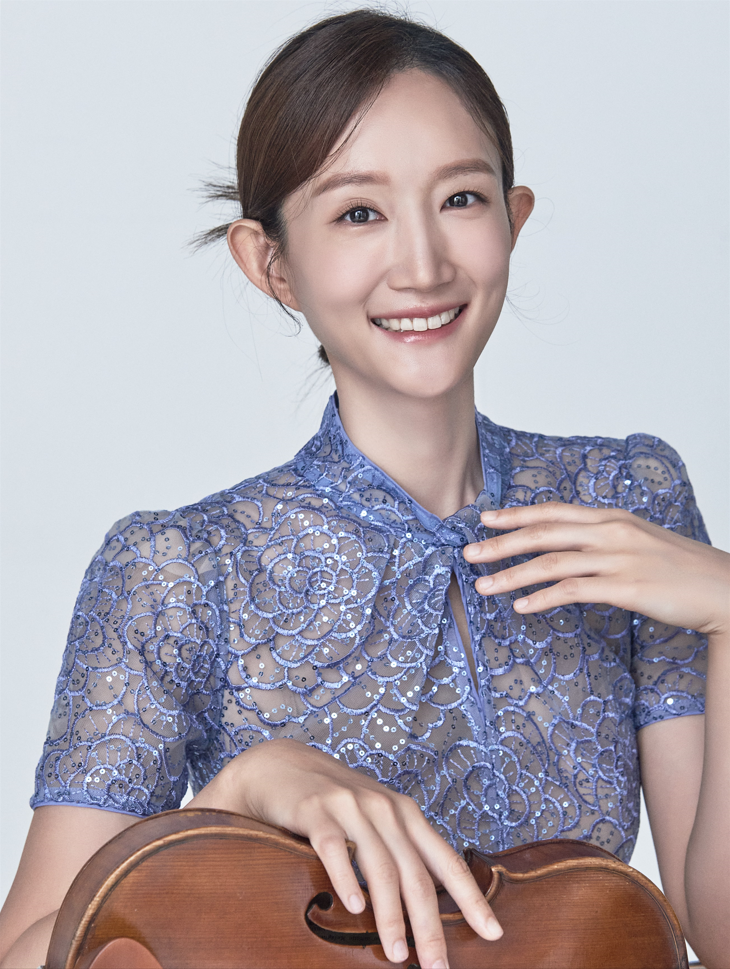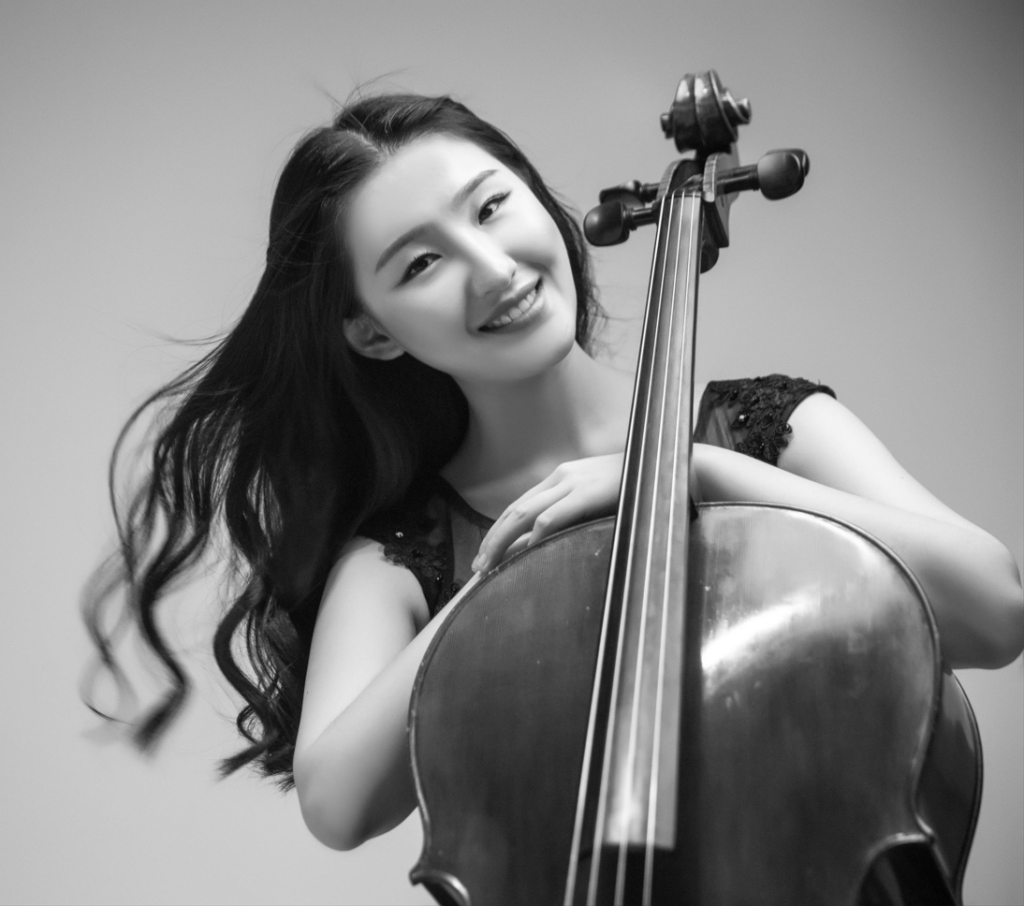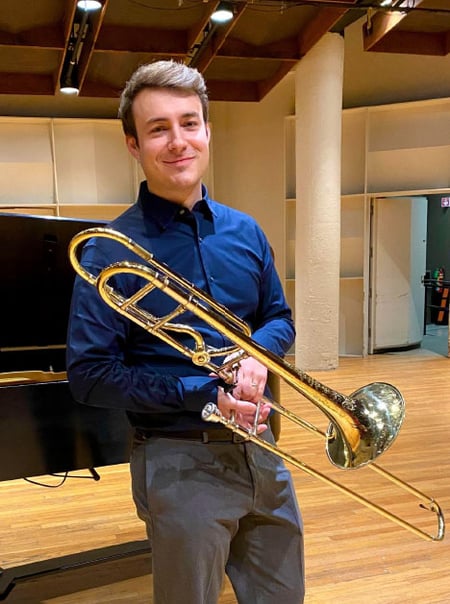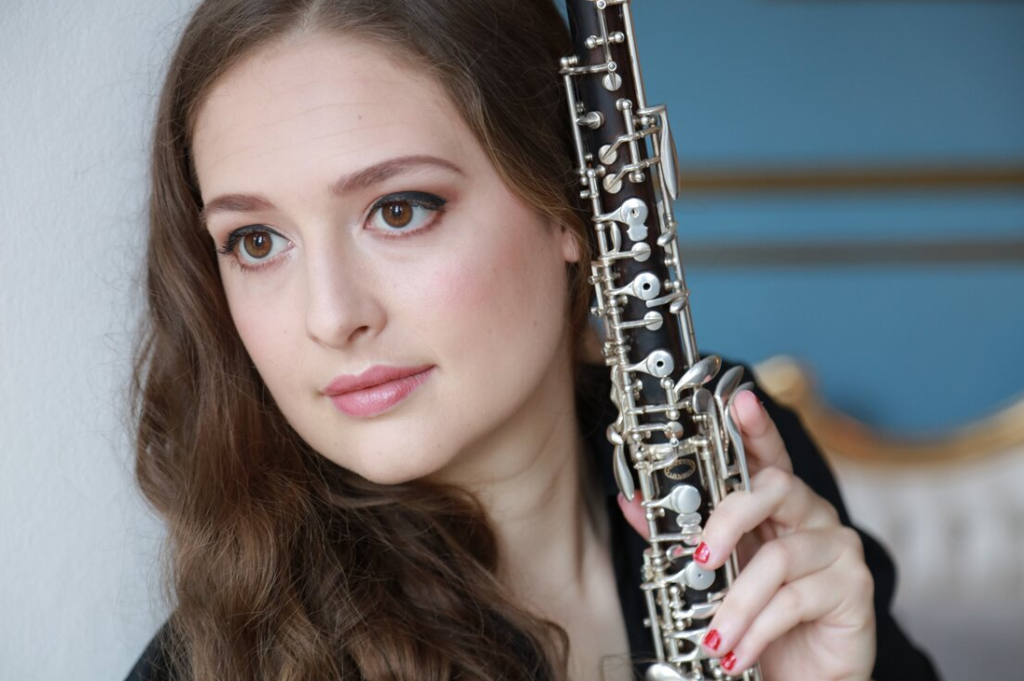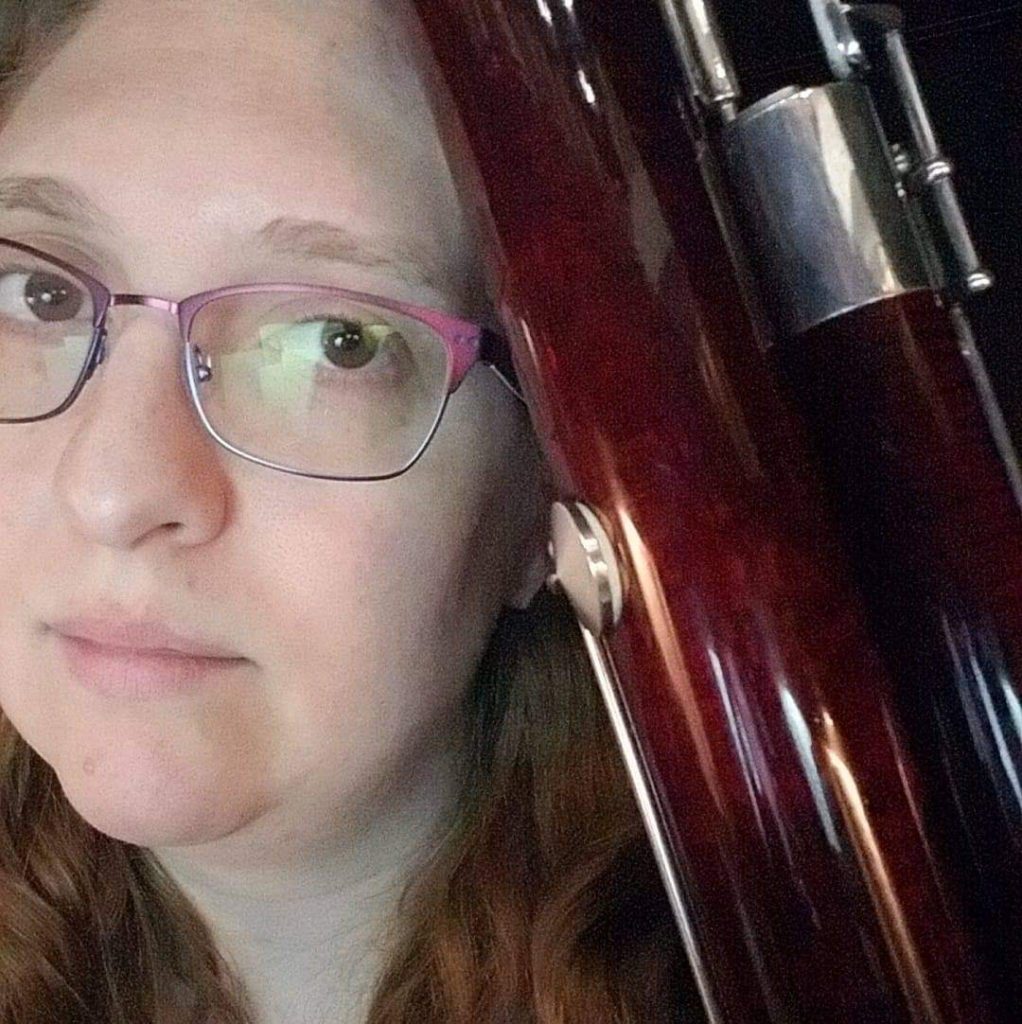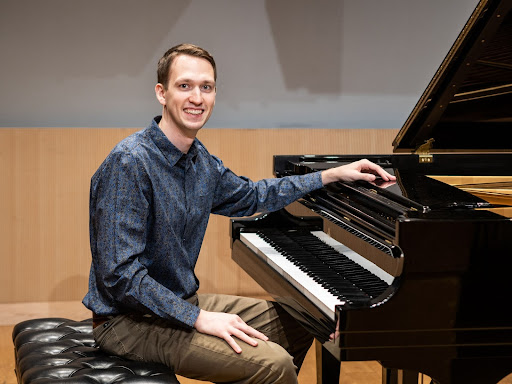William Hume, piano
Performance Details ~
Thursday, April 13, 2023 at 6:30 pm
Marshall Room, College of Fine Arts, Boston University
855 Commonwealth Avenue
Boston, MA
Welcome to my DMA chamber recital! Today’s program will highlight instruments across nearly all families – strings, woodwinds, brass and chordophone (piano). The repertoire speaks to various styles including early 19th-century classicism, French neoclassicism and the synthesis of serialism and jazz.
Below are full repertoire details, program notes and performers’ biographies ~
Recital Program
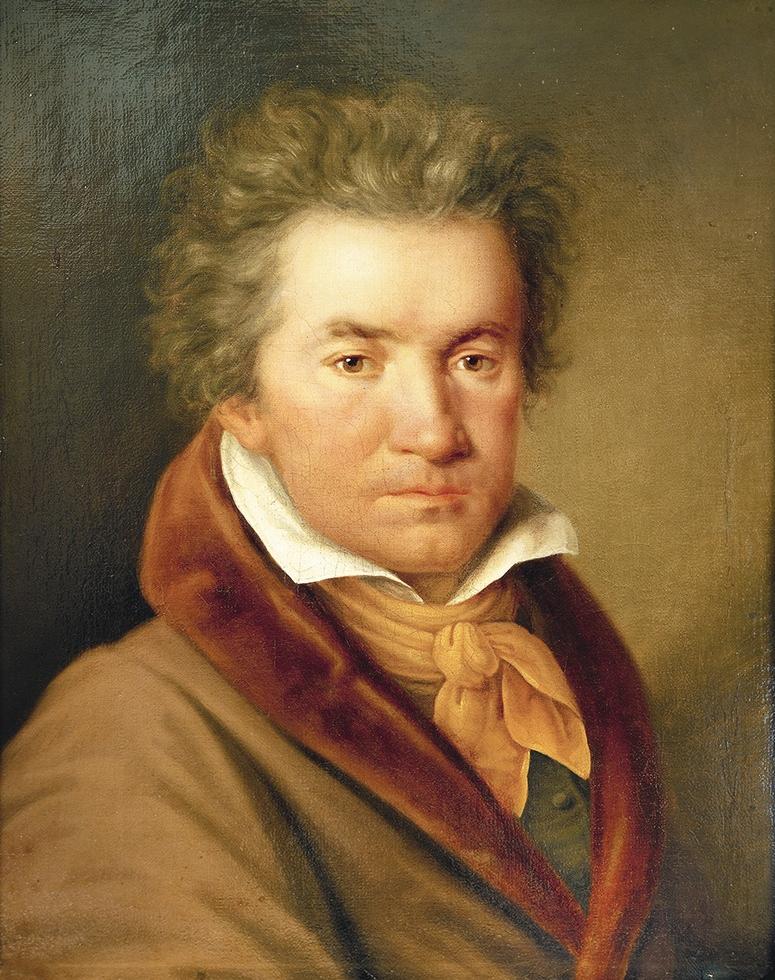
Pictured in 1815, shortly after the premiere of the “Archduke” Trio in 1814
Piano Trio “Archduke” Op. 97 in B-flat Major
I – Allegro moderato
II – Scherzo (Allegro)
III – Andante cantabile, ma però con moto
IV – Allegro moderato
Yeonji Shim, violin
Chao Du, cello
INTERMISSION (10 minutes)
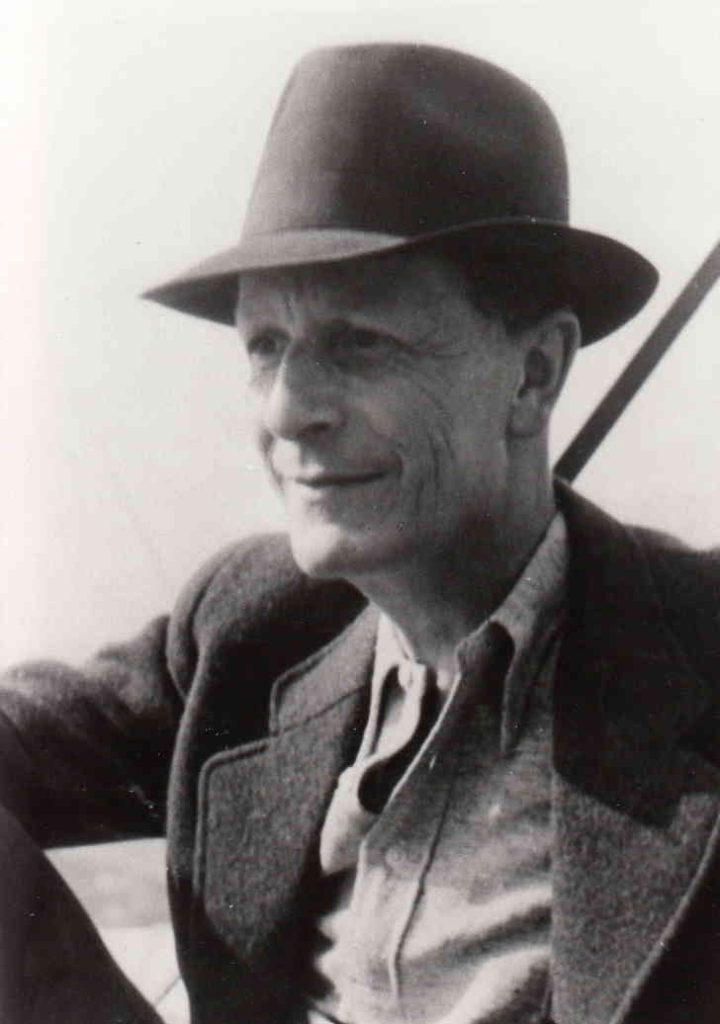
Pictured in 1942, soon after composing the Ballade in 1940 (Frank Martin Stichting 2023)
Ballade for Trombone and Piano
Anthony Cosio-Marron, trombone
Trio for Oboe, Bassoon and Piano, FP 43
I – Presto
II – Andante
III – Rondo
Amber Verser, oboe
April Verser, bassoon
Program Notes
Ludwig van Beethoven – “Archduke” Trio
Keywords: Expanded Forms, Sudden Contrasts, Reverence
Composed 1811 in Vienna, Austria
Of all of Beethoven’s patrons, Archduke Rudolph, the dedicatee of Trio Op. 97, played the most significant financial and personal role in Beethoven’s life. A skilled musician, the Archduke became one of Beethoven’s few private students in 1803, studying piano and composition. Soon after, the Archduke began supplementing Beethoven’s annual salary in today’s equivalent of thousands of dollars per month. From there on, Beethoven would dedicate numerous works to the Archduke. When Napoleon’s conquest of Vienna forced Archduke Rudolph to flee in 1809, Beethoven composed the famous “Les Adieux” Sonata to acknowledge his temporary absence. The movements are titled “The Farewell,” “The Absence” and “The Return.” The Archduke and Beethoven continued their friendship and correspondence until the end of Beethoven’s life. One of the last piece’s Beethoven wrote for the Archduke was the Missa Solemnis mass, completed in 1823 just before the Ninth Symphony in 1824. This honored the appointment of Archduke Rudolph as Archbishop of Olomouc. The below excerpt of a letter Beethoven sent to the Archduke captures Beethoven’s appreciation for his patron and friend:
“All that can be comprehended in one wish, or individually named,–health, happiness, and prosperity,–all are included in the prayer I offer up for Y.R.H. on this day. May the wish that I also form for myself be graciously accepted by Y.R.H., namely, that I may continue to enjoy the favor of Y.R.H.” – Beethoven writing to Archduke Rudolph in 1819
Written in 1811, Trio Op. 97 is the last of Beethoven’s 14 piano trios and is the longest, due to extended movement forms. Beethoven himself played the fortepiano part at the premiere in 1814, marking one of his last public performances due to his hearing loss.
Movement one follows an extended sonata form. The theme in B-flat is presented with various piano accompaniment before modulating to the surprising key of the Major submediant, G Major, for the second theme. The exposition then closes with an extended arpeggiated section. The development uses various subdivisions and syncopations to create rhythmic drive and explores virtuosity through tremolos, ornamentation and scales in 3rds and 6ths. As is customary in the recapitulation, both thematic areas stay in the tonic key of B-flat Major, and the coda includes additional piano arpeggiation and use of Major and minor sonorities to build anticipation for the final cadence.
The word “scherzo” refers to a joke, and the second movement’s bouncing theme in a lively triple meter creates a sense of unfolding excitement. Beethoven explores sudden or “subito” dynamic changes and motivic repetition to create drama. In the interior section, each instrument presents a single-note stepping line one after another that creates a canon in the ensemble. This scheming character leads to a bold theme in D-flat Major and falling ornamentation. In the second instance of this theme, Beethoven modulates to E Major. The third time, Beethoven delays the bold theme using a pedal point in the piano that crescendos until finally reaching the theme, this time in B-flat Major. All of these key changes are written with new key signatures, underscoring a move to the romantic convention of formalizing “out-of-key” playing. The A material returns, and the coda alludes to the stepping motif of the interior section before concluding with a final ascending scale.
In the third movement, Beethoven makes frequent use of passages that grow louder and more intense, only to lead to a sudden soft chord, creating a feeling of vulnerability. The piece is a variation set featuring a tender step-wise theme. The theme’s phrase begins in D Major and moves to the dominant of A Major, before returning to D. Each presentation of the theme is in 28 measures, and Beethoven sets it to different harmonic textures and rhythmic motifs, creating various moods and timbres. In the final variation, Beethoven restates the theme as heard in the opening bars but soon abandons the established phrase structure to create an expressive coda. The final chord draws the listener’s ear directly into the final movement.
The fourth movement opens with a jovial bouncing theme in the tonic key of B-flat Major. The piano plays a prominent role in developing the theme and driving the ensemble through scales, turning figures and quick, broken intervals. After a brief quiet melody in the dominant of F Major, Beethoven returns to the main theme. In this second presentation, the music quickly modulates to the subdominant of E-flat for an extended development filled with scales, arpeggiation and tremolos. It is in this dramatic section that the violin and cello finally take the theme for the third statement, which returns to the tonic key of B-flat. The ensemble begins the coda together, very quietly with a long piano trill in the surprising key of A Major. The strings present a version of the theme, this time in three note grouping to create a sense of drive. The coda then shifts back to B-flat Major with continuous piano figuration and call and response between the strings and piano. The piece ends with an even faster rising and falling passage for an exciting final cadence.
Frank Martin – Ballade for Trombone and Piano
Keywords: Extremes, Abandon, Epic
Composed 1940 in Geneva, Switzerland
Frank Martin was one of the most important Swiss composers in the 20th century. In his early training, Martin studied neoclassical composers like Ravel and soon developed a penchant for twelve-tone writing. He held prestigious teaching positions in Switzerland at the Geneva Conservatoire and the Technicum Moderne de Musique, and later in the Netherlands at Hochschule für Musik where he even mentored the influential electronic and serial composer Karlheinz Stockhausen. Martin also established the Chamber Music Society of Geneva and served as conductor and keyboardist. Martin’s works include numerous instrumental and orchestral compositions, ensemble repertoire, theater pieces and an opera. By blending influences of tonality, atonality, jazz, spirituality and text-settings, Martin’s music speaks to the best of 20th century trends and resonates with large audiences.
The Ballade is a crucial work for literature written for trombone and piano, because it is the first of this setting to explore serial techniques, or composing through series of pitches, dynamics and rhythms. Furthermore, the piece blends jazz and classical conventions. A testament of Martin’s study of post-tonal composers like Arnold Schoenberg, the trombone opens the piece by playing ten notes which create a tone-row that is transformed throughout. The piece creates a sense of unfolding narrative through successive sections of new material and several tempo changes. Throughout, the piece captures moments of propulsion, scheming and grandeur.
Francis Poulenc – Trio for Oboe, Bassoon and Piano
Keywords: Heightened Expression, Communicative, Jovial
Composed 1924-1926 in Paris, France
Francis Poulenc’s pieces blend classical forms while showcasing his unique compositional voice. Poulenc was self-taught and well-versed in classical literature, receiving guidance from important 20th century figures like Igor Stravinsky, Maurice Ravel and Manuel de Falla, the Trio’s dedicatee. He was part of a group of French composers known as “Les Six” which generally favored a neoclassical style over late romanticism or impressionism.
Poulenc’s music demonstrates contrasts of mood from ecstatic joy to longing sentimentality. In the Trio for Oboe, Bassoon and Piano, each movement has sections of contrasting thematic material, articulation and mood. In addition, the instruments frequently trade melodies to create the sense of a conversation. An accomplished pianist, Poulenc performed the premiere of the Trio in Paris in 1926.
In his life, Poulenc faced struggles and battled depression. His parents died when he was young, and he served in both World Wars. In fact, his early piano teacher, Spanish pianist Ricardo Viñes became a guardian figure for Poulenc and encouraged him to continue pursuing music. Despite Poulenc’s struggles, his music maintains a sense of humor, and his numerous instrumental, vocal, orchestral and operatic works constitute a major part of 20th century French repertoire.
Meet the Performers
Yeonji Shim started to study the violin at 4 years old in South Korea. She attended Sunhwa Arts School and Seoul Arts High School, earned the Bachelor of Music degree at Yonsei University, and did graduate work at both Indiana University (MM) and Mannes before entering the Doctoral program at BU where she is a violin student of Professor Peter Zazofsky. She made her solo debut with the Anima Chamber Orchestra at Seoul Arts Center in 2015. Yeonji’s summer activities have included the National Repertoire Orchestra (Breckenridge, CO), Academie internationale d’ete de Nice (France), etc. Among her many other distinctions are IU’s Artistic Excellence Award, and membership in the Civic Orchestra of Chicago in 2019.
Chao Du began her cello studies at age eight with Professor Xiaoying Han from Xi’an conservatory of music. She earned Bachelor’s degrees in cello performance at the Xi’an Conservatory of Music, and she went on to earn the Master of Music degree at Boston University’s School of Music. Chao won several music competitions. These include First Prize in Shaanxi Province of “CCTV National Art TV Competition. China (2005), Excellent Performance award in the “Sixth VC Cup of Professional Cello Competition” (2008), First Prize of the Second Shaanxi Music Awards Cello Competition.(2010). She played Chopin “Polonaise Brillante Op.3” in Chinese cello Society Council concert in 2008. To this, in the journal which is called “Performer”(the third issue, 2009) made special a feature on her performance , and made comment on “her playing enthusiastic and unrestrained, full of imagination, and her presentation on music is very depth”. She has participated in the Oberstdorfer Musiksommer Masterclasses in Germany (2011), The Festiv’ Academies 1000 Sources & Dordogne Music Festival in France, and she got invited and fully sponsored by French cellist Marie-Thérèse Grisenti (2012), First Beijing International Cello Festival (2013), First International Cello Festival in Shanghai (2013), Bowdoin International Music Festival in the USA (2014), Spoleto Festival USA (2018, 2019) , She also is a member of Boston Philharmonic Orchestra. Chao is currently pursuing the Doctor of Musical Arts degree at Boston University, studying with Professor Michael Reynolds.
Anthony Cosio-Marron is a Boston Philharmonic Crescendo Music Education teaching fellow and trombonist. He began playing trombone as an elementary schooler in Maryland where he grew up. He received his Bachelor’s degree in trombone performance from the Cleveland Institute of Music and his Master’s from the University of Michigan. He is currently a doctoral student at Boston University and a freelance trombonist in the Boston area. Though his training is mostly classical, he has had the good fortune to have experience in jazz, musical theater, and pop styles. As a trombonist, he has appeared with the Boston Symphony Orchestra, Rhode Island Philharmonic, and Qatar Philharmonic, as well as in the pit at the North Shore Music Theater. In his spare time, he enjoys cooking, sketching, and spending time with his wife and newborn daughter.
Praised by Cape News for her “seamlessly superb” playing, oboist Amber Verser is an active freelancer of orchestral, chamber, and solo music. She has performed with the BBC Symphony Orchestra, the orchestra of the Viennese Volksoper, Philharmonia Orchestra, the Detroit Symphony Orchestra, and the Fox Valley Symphony Orchestra. She holds a Master of Performance in orchestral performance from the Royal College of Music and also has degrees from Bowling Green State University and Lawrence University. Her teachers include Nermis Mieses, Christine Pendrill, John Anderson, and Howard Niblock. In addition to performance, she teaches oboe and is a chamber music coach for the Boston Youth Symphony Orchestras.
April Verser is a bassoonist/contrabassoonist and educator, originally from Loveland, CO. She is currently studying for a Doctor of Musical Arts degree in Bassoon Performance at Boston University under primary teachers Nancy Goeres and Margaret Phillips. She received her Masters in Bassoon Performance from Carnegie Mellon University in Pittsburgh, PA in 2013, where she also studied with Nancy Goeres. In 2011, she received a Bachelor of Music degree in Music Education (Instrumental) and Bassoon Performance along with a Bachelor of Arts degree in Mathematics with a German minor from Lawrence University in Appleton WI. At Lawrence, she studied bassoon with Monte Perkins and piano with Lee Tomboulian, and she holds a WI teaching certificate.
As an educator, April has taught private lessons in bassoon, clarinet, and piano since 2010. She also currently holds a teaching position at Boston University, teaching aural music theory to undergraduates.
April is a regularly performing freelance bassoonist in the greater Boston area. Prior to moving to Boston, April lived in the Chicago area, and was a regular freelancer in the Chicago area. April has held positions with the Billings Symphony Orchestra and Chorale, the Beloit-Janesville Symphony, the Rockford Wind Quintet, and the Fox Valley Symphony Orchestra, among other groups.
April is also the Camp Director of MathPath, a summer program for exceptionally mathematically gifted students age 11-14, and a competitive mathematics contest problem-writer, and a competitive mathematics coach for secondary students. In her spare time, April enjoys baking and doing textile crafts – especially cross stitching.
William Hume is a doctoral pianist at Boston University and recently completed the Arts Management Certificate Program at Metropolitan College. He works as Education Coordinator for the Boston Philharmonic Orchestra, teaches at the South Shore Piano School in Quincy and is Minister of Music at the Shiloh Baptist Church in Medford. His other passions include chamber music, music theory and arranging music.
Acknowledgements
Thank You to my teacher, Prof. Linda Jiorle-Nagy, for your guidance in my studies these past three years and on this great repertoire. Thank you as well to Prof. Peter Zazofsky for your time in coaching our ensemble. Thank you to Prof. Shiela Kibbe for your advising. My deepest admiration and appreciation to my ensemble collaborators Yeonji, Chao, Anthony, Amber and April for your illuminating musicianship and efforts. Thank you to Boston University administration, faculty and staff. And thank you to my family and friends for your support!
